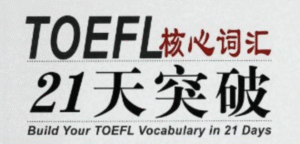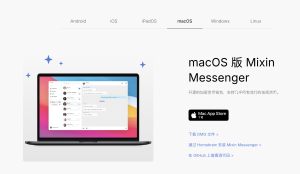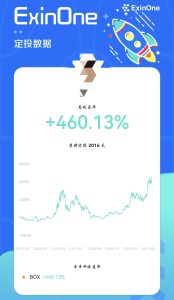The term “Web3” is dominating tech conversations, but what is Web3 exactly? For entrepreneurs, developers, and investors, it represents more than just a buzzword; it’s a fundamental shift in how we interact with the internet, offering a new world of crypto opportunities and Web3 business models.
This comprehensive guide will break down the core concepts of the Web3 ecosystem, explore the most promising Web3赚钱机会 (Web3 money-making opportunities), and analyze the hot Web3 projects and trends shaping the future.
Defining Web3: What is the Decentralized Web?
To truly understand what is Web3, it’s helpful to look back at the evolution of the web:
- Web1 (Read-Only): The early internet was static and open-source. Users were primarily consumers of information from basic websites.
- Web2 (Read-Write): The current era is defined by social media platforms and tech giants (Google, Meta, Amazon). Users create content, but these corporations own the data, control the platforms, and capture the vast majority of the value.
- Web3 (Read-Write-Own): So, what is Web3’s answer to this? Web3 is the vision for a new, decentralized internet built on blockchain technology. It promises to give power and ownership back to users through core principles:
- Decentralization: No single entity controls the network. Control is distributed across its users.
- Trustlessness: Interactions and transactions can happen directly between parties without relying on a trusted intermediary, thanks to smart contracts.
- User Ownership: Users own their data, digital assets, and identity through crypto wallets and decentralized applications (dApps).
- Native Payments: Cryptocurrencies and tokens are built-in, enabling seamless global transactions without traditional banks.
In essence, Web3 is an internet owned by its builders and users, orchestrated with tokens.
The Expansive Web3 Ecosystem: Key Components
The Web3 ecosystem is a complex and interconnected landscape. Key pillars include:
- Blockchains & Layer Protocols: The foundational layers. Ethereum is the dominant leader for dApps, but competitors like Solana, Avalanche, and Polygon are gaining traction with faster speeds and lower costs.
- Decentralized Applications (dApps): The applications that run on these blockchains. Unlike apps on your phone, their backend code runs on a decentralized peer-to-peer network.
- Cryptocurrencies & Tokens: Native currencies (like ETH or SOL) power the networks. Tokens can represent governance rights (governance tokens), ownership of assets, or access to services.
- Wallets: Your gateway to Web3. Wallets like MetaMask and Phantom store your private keys and allow you to interact with dApps, sign transactions, and manage your digital identity.
- Decentralized Autonomous Organizations (DAOs): Community-led organizations with no central authority. They use governance tokens to enable collective decision-making on treasury management and project direction.
- Decentralized Physical Infrastructure Networks (DePIN): Projects that use crypto tokens to incentivize people to build and maintain real-world physical infrastructure, like wireless networks (Helium) or mapping data (Hivemapper).
Top Web3 Business Models and Crypto Opportunities
The shift to a user-owned internet creates massive crypto opportunities for entrepreneurs. Here are the most viable Web3 business models to explore:
1. Build a dApp (Decentralized Application)
Identify a problem that centralized systems handle poorly and build a decentralized alternative.
- Opportunities: Decentralized finance (DeFi) lending/borrowing, NFT marketplaces, play-to-earn gaming, decentralized social media, and more.
- Revenue Models: Transaction fees, native token appreciation, subscription models for premium features.
2. Create and Launch an NFT Project
Move beyond simple profile pictures (PFPs). NFTs can represent membership, access, intellectual property, and real-world assets.
- Opportunities: Launch a generative art collection with utility (e.g., access to a community or software), tokenize real-world assets like real estate, or create a brand-focused NFT loyalty program.
- Revenue Models: Primary sales, secondary sales royalties (a perpetual revenue stream), and leveraging the IP for other products.
3. Provide Critical Web3 Infrastructure
As the ecosystem grows, the “picks and shovels” are in high demand.
- Opportunities: Develop node infrastructure services (e.g., Infura, Alchemy), create wallet software, build security auditing tools for smart contracts, or offer indexing and data querying services (The Graph).
- Revenue Models: SaaS subscriptions, pay-per-use API fees, and protocol rewards.
4. Participate in a DAO
DAOs are new forms of coordinated human effort. You can earn by contributing.
- Opportunities: Offer your skills (development, marketing, community management) to a DAO you believe in. Many pay contributors in their native governance tokens.
- Revenue Models: Compensation in tokens, which can appreciate in value as the DAO’s project succeeds.
5. Play-to-Earn and Learn-to-Earn
The concept of “earning” while participating is core to Web3.
- Opportunities: Develop or play games where in-game assets are truly owned by the player and can be monetized. Create educational platforms that reward users with tokens for learning about Web3.
- Revenue Models: In-game asset sales, token rewards, educational course sales.
Hot Web3 Projects and Market Trends
The Web3 market is rapidly evolving. Here are some of the hot Web3 projects and directions capturing attention and investment:
- DeFi 2.0: The next evolution of Decentralized Finance focuses on improving capital efficiency, cross-chain interoperability, and solving liquidity issues. Look at projects like Uniswap V4 and innovative lending protocols.
- Real-World Asset (RWA) Tokenization: This is a massive trend. Projects are tokenizing everything from treasury bills and real estate to commodities on the blockchain, making them accessible to a global audience. Ondo Finance is a leader in this space.
- DePIN (Decentralized Physical Infrastructure): As mentioned, projects like Helium (wireless networks) and Hivemapper (decentralized mapping) are using crypto incentives to build real-world infrastructure faster and cheaper than traditional companies.
- AI x Web3: The merger of AI and blockchain is hot. This includes projects focused on decentralizing AI training and data (e.g., Bittensor), or using blockchain to verify the provenance of AI-generated content.
- Layer 2 Scaling Solutions: With Ethereum’s mainnet still expensive, Layer 2 networks like Arbitrum, Optimism, and Polygon are thriving ecosystems themselves, hosting thousands of low-cost dApps. Building on an L2 is a primary strategy for many new startups.
- Improved User Experience (UX): A major barrier to Web3 adoption is poor UX. Projects that abstract away seed phrases, enable social logins, and make wallets seamless (like account abstraction wallets) are critically important and gaining traction.
Conclusion: The Web3 Future is Being Built Now
Understanding what is Web3 is the first step toward participating in the next iteration of the internet. It’s a paradigm shift towards decentralization, user ownership, and new economic models. The Web3 ecosystem is rich with crypto opportunities, from building infrastructure and dApps to participating in DAOs and NFT innovation.
By studying the hot Web3 projects and trends, you can identify gaps in the market and position yourself—whether as a builder, investor, or contributor—to be part of this transformative movement. The key is to start learning, engaging, and exploring the vast potential of the decentralized web.







